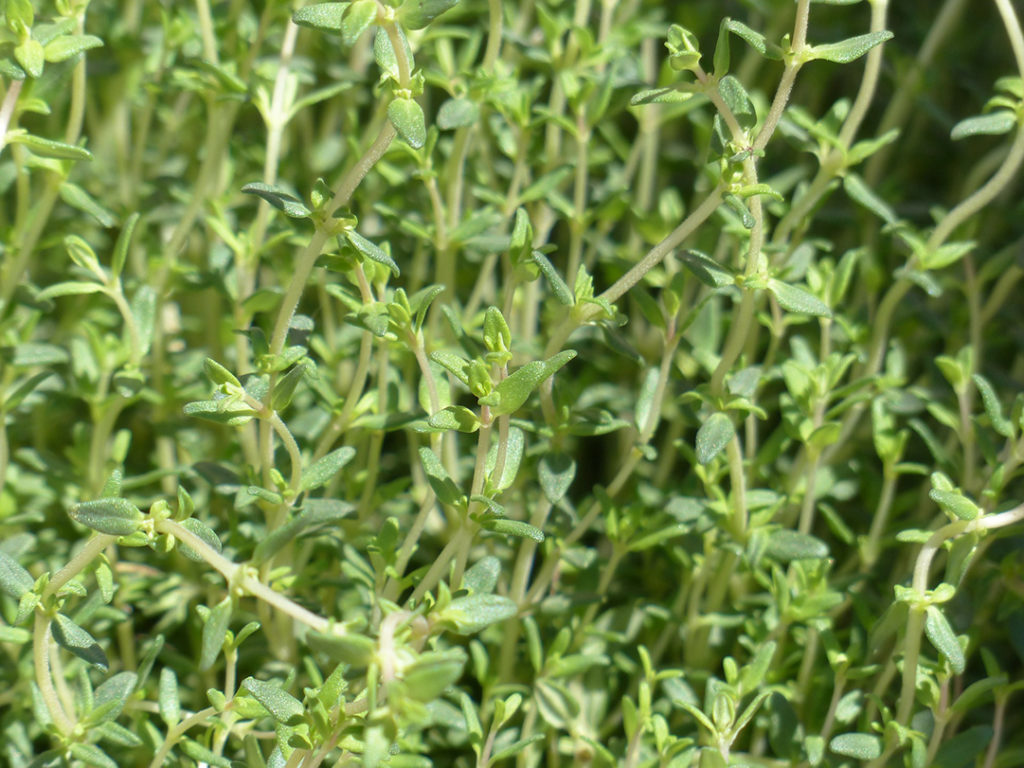
Belarus
Thyme
Thymus

General Description / Cultural Significance
Thyme is widely represented in the folklore, songs, and poetry of Belarus. Its particular iconic fragrance means it is used in food, teas, and stronger drinks such as Belarus Vodka. Common thyme, or Thymus vulgaris, has been used especially to flavor soups, sauces, and meats. Creeping thyme, on the other hand, is used as a groundcover.
The essential oils of Thymus vulgaris can be used in deodorants and perfumes. Its essential oils are also used in aromatherapy, and have antioxidant and antiseptic properties. It is a possible medical alternative for treating coughs and respiratory ailments, and drinking Thyme tea is known to soothe nerves and act as a sedative. Its oil contains terpenes and alcohols, which may also possess anti-aging properties.
Climate Change/Conservation Status
Belarus has a long history of stable climate, abundant water resources, and good forest health. There have been efforts to protect these resources, including plants and animals. However, changing climate conditions are being felt and Thyme is generally a drought resistant plant, which is advantageous in a world affected by rising global temperatures. There are currently no conservation measures in place to protect Thymus vulgaris specifically, and it is listed by the IUCN Redlist as a plant of Least Concern that is not endangered.
This doesn’t mean that Belarus as a country is resistant to climate change or that the threat of rising global temperatures doesn’t exist. According to the Climate Risk Profile of Belarus, the country is experiencing temperature and precipitation changes, and will face more severe droughts in the near future. In 2019, this prompted the country to take action in key sectors of agriculture and economy in order to protect themselves. The first half of 2019 was the warmest year in the past 35 years for the country, which also means there is increased risk of forest fires and potential danger to the wildlife that exists there.
Alternate Names
Common thyme
Summer thyme
Garden thyme
English thyme
Sources
Allen, D., et. al., 2014. European Red List of Medicinal Plants. Luxembourg: Publications Office of the European Union. [website]
Bartnictwo, 2019. Tree-beekeeping workshop in Naliboki Forest Belarus. Bartnictwo (en). [website]
Bartram, T., 1995. Encyclopedia of Herbal Medicine. Grace Publishers: 421.
Climate Links, 2018. Climate Risk Profile: Belarus. US Agency for International Development.
First Secretary, Embassy of Republic of Belarus. This statement can be found on the World Sensorium original website.
Kuete, V., 2017. Thymus vulgaris. Medicinal Spices and Vegetables from Africa, pp. 599–609.
Mandal, S. & DebMandal, M., 2015. Thyme (thymus vulgaris L.) oils. Essential Oils in Food Preservation, Flavor and Safety, pp. 825–834. DOI: 10.1016/B978-0-12-416641-7.00094-8
McElwee, R., 2016. Belarus suffers storm damage. Al Jazeera. [website]
Thompson, J., et. al., 2013. Evolution of a genetic polymorphism with climate change in a Mediterranean landscape. Proceedings of the National Academy of Sciences. DOI: 10.1073/pnas.1215833110
Torres, I., 2013. Changing thymes: plants adapt to climate warming. Blogger. [website]
The World Bank, 2018. Belarus Builds Forest Resilience to Climate Change with World Bank Support. World Bank Group. [website]

